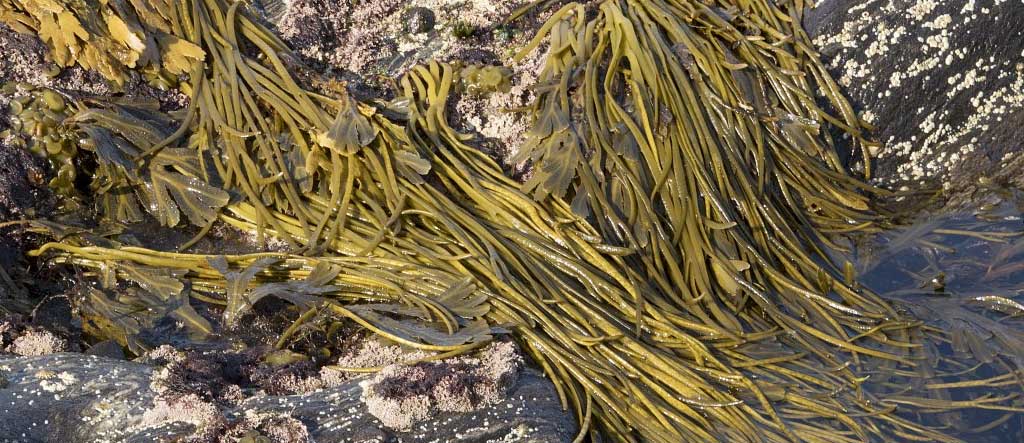Himanthalia elongata

Sea spaghetti has a mild sweet taste. It cooks up in minutes, tastes great and makes a healthy substitute for conventional pasta. Chop and add to salads, stir-fries, soups and stews, or serve it in place of a green vegetable. If you like a savoury chew try eating it raw, fresh or dried.
You can harvest fresh sea spaghetti off the coast of Ireland, during low tide, from early summer through autumn. Ensure the waters you are harvesting in are fresh and free from pollution. Never pull seaweeds away from their rock. Use a scissors or knife, and cut only the top third of each strand so that the plant can re-grow. Do not over-harvest in any one area and make sure there is plenty left behind. Take only as much as you will use.
We are lucky to have many quality Irish suppliers, who still harvest seaweed by hand in a sustainable way. If you are buying seaweed please ensure you buy Irish. Sea spaghetti is a rich source of minerals, including Calcium, Iodine, Magnesium, Manganese and Iron, and high in Vitamin C. It is a good source of soluble fibre, carbohydrates and protein.¹ Seaweed fibres cleanse the digestive tract and assist with the metabolism of fats.²
Preparation
Fresh sea spaghetti: Rinse well, eat raw or cook to soften.
Dried sea spaghetti: Soak in clean water for about 30 minutes, it will swell up to 5 times its size and weight and lighten in colour.
- Marinate in lemon juice or vinegar for added taste.
- You can also blanch your sea spaghetti by pouring boiling water over it before serving if you don’t want to cook it.
Boil or steam
Boil as you would conventional spaghetti, about 5 – 15 minutes, strain and serve. The longer you boil it the softer it gets.
For a firm texture try steaming it for 20 –35 minutes or until tender.
Adds vital nutrients, texture and interest to salads, mix in with regular pasta dishes, serve with fish or simply toss in a little olive oil with a drizzle of lemon juice for a light snack.
(1) Algaran: Sea Spaghetti Nutritional Info
(2) EUFIC: Seaweed – exploring its dietary value
